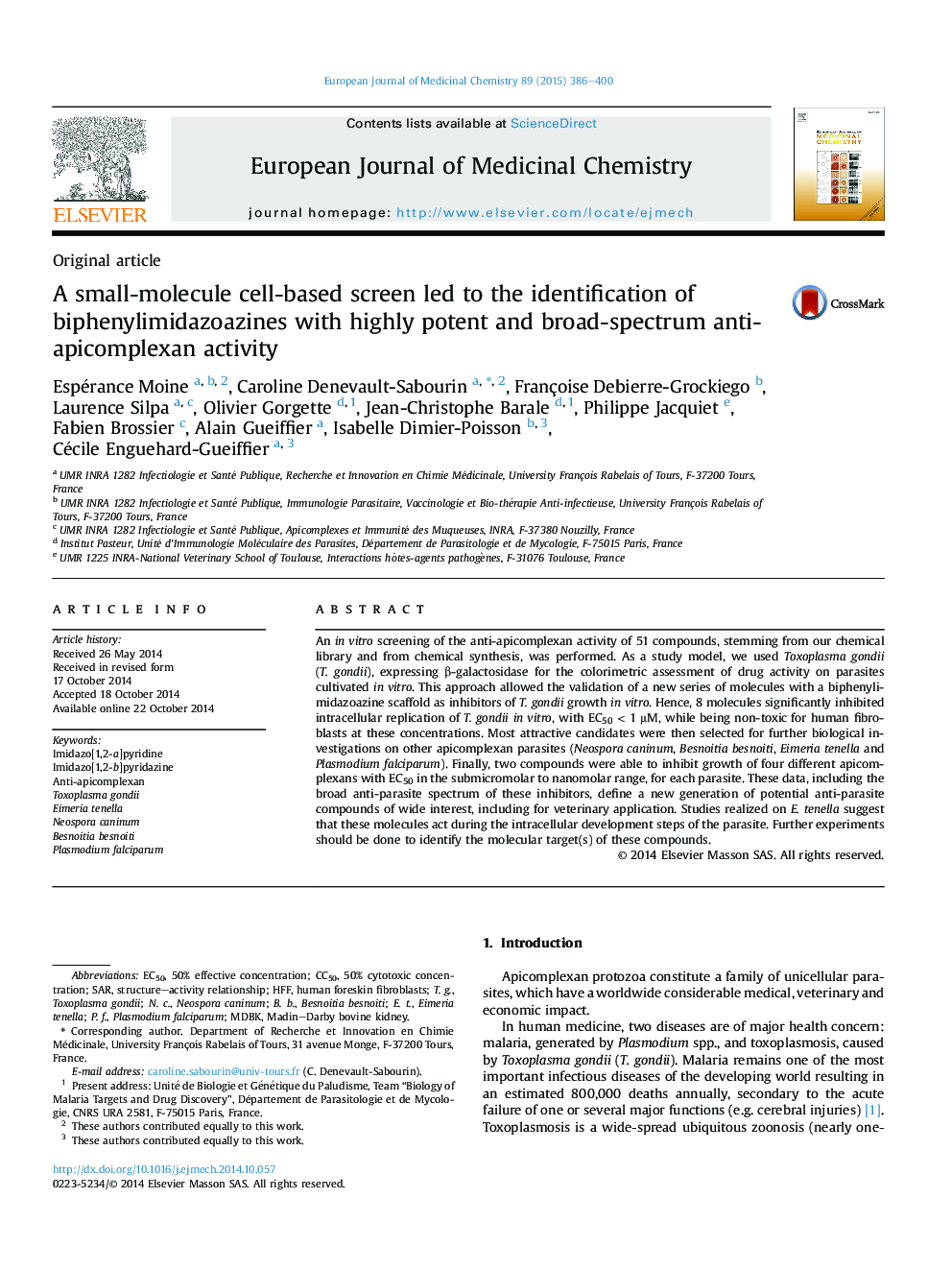| کد مقاله | کد نشریه | سال انتشار | مقاله انگلیسی | نسخه تمام متن |
|---|---|---|---|---|
| 1392252 | 1501127 | 2015 | 15 صفحه PDF | دانلود رایگان |

• In vitro screening of anti-Toxoplasma gondii activity of 51 compounds.
• Biphenylimidazoazines with potent anti-apicomplexan activity were identified.
• The lead compound 8e possessed high therapeutic index.
• 8e inhibited growth of five different apicomplexans (EC50 0.08–1.01 μM).
An in vitro screening of the anti-apicomplexan activity of 51 compounds, stemming from our chemical library and from chemical synthesis, was performed. As a study model, we used Toxoplasma gondii (T. gondii), expressing β-galactosidase for the colorimetric assessment of drug activity on parasites cultivated in vitro. This approach allowed the validation of a new series of molecules with a biphenylimidazoazine scaffold as inhibitors of T. gondii growth in vitro. Hence, 8 molecules significantly inhibited intracellular replication of T. gondii in vitro, with EC50 < 1 μM, while being non-toxic for human fibroblasts at these concentrations. Most attractive candidates were then selected for further biological investigations on other apicomplexan parasites (Neospora caninum, Besnoitia besnoiti, Eimeria tenella and Plasmodium falciparum). Finally, two compounds were able to inhibit growth of four different apicomplexans with EC50 in the submicromolar to nanomolar range, for each parasite. These data, including the broad anti-parasite spectrum of these inhibitors, define a new generation of potential anti-parasite compounds of wide interest, including for veterinary application. Studies realized on E. tenella suggest that these molecules act during the intracellular development steps of the parasite. Further experiments should be done to identify the molecular target(s) of these compounds.
Figure optionsDownload as PowerPoint slide
Journal: European Journal of Medicinal Chemistry - Volume 89, 7 January 2015, Pages 386–400